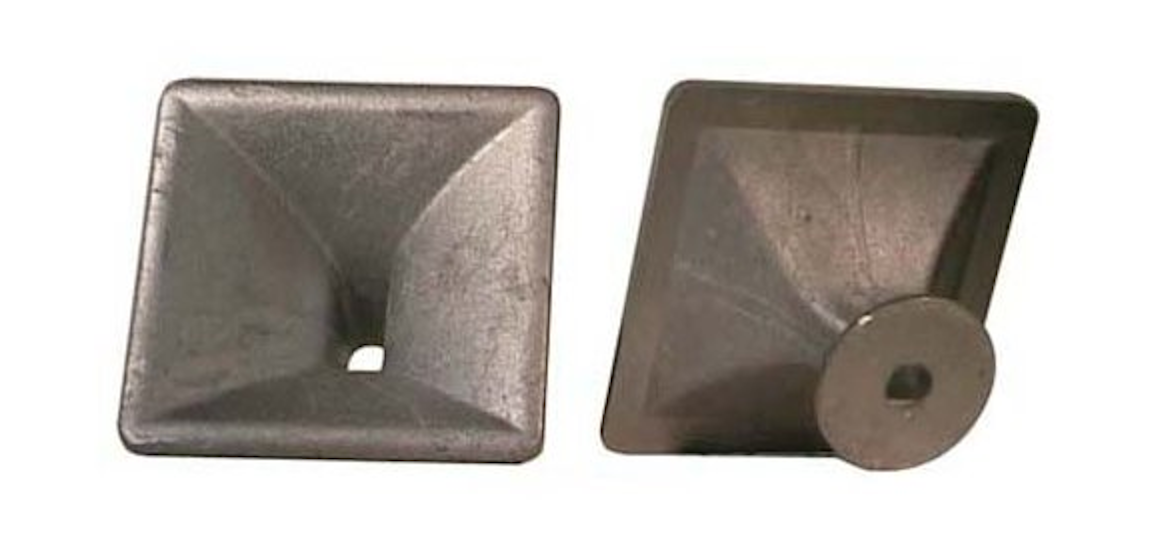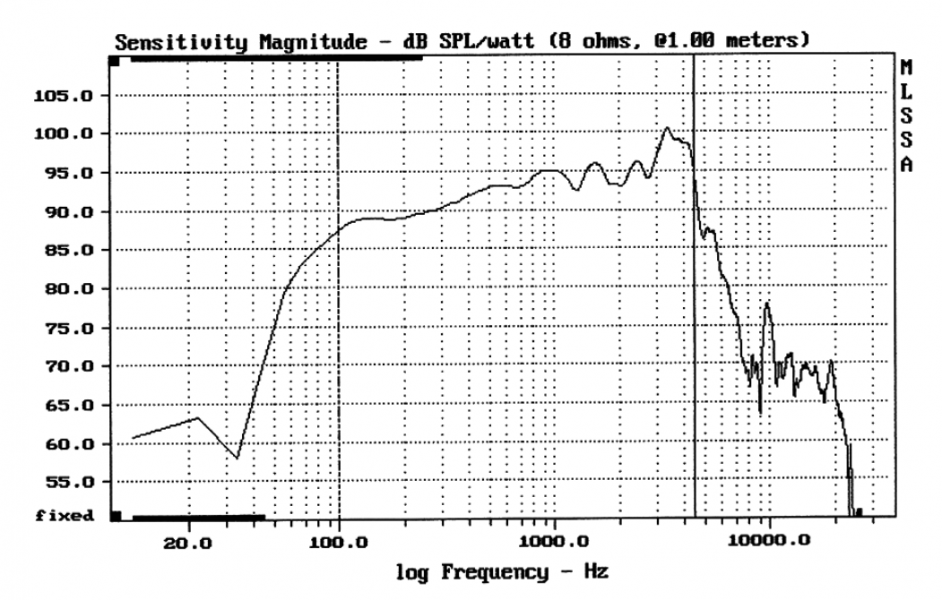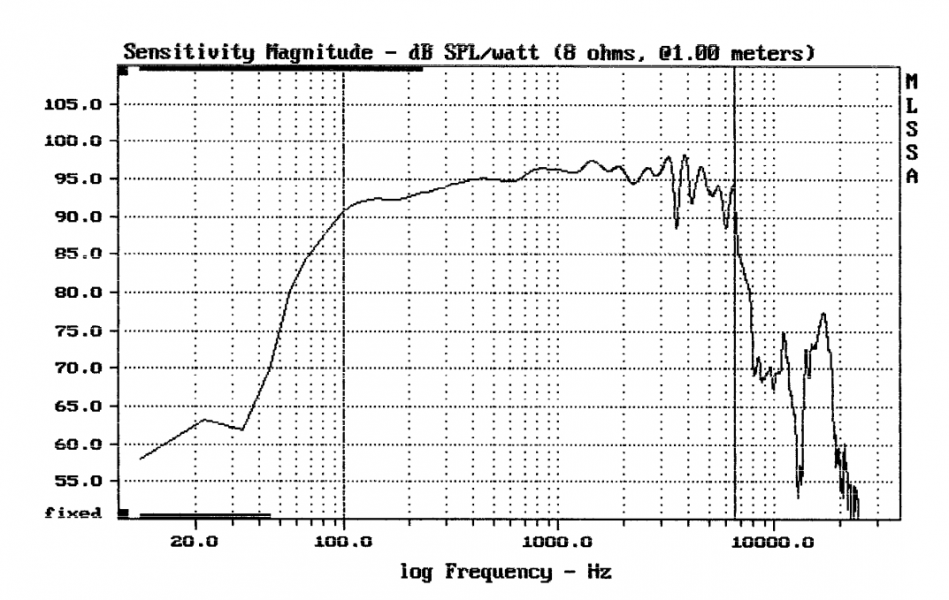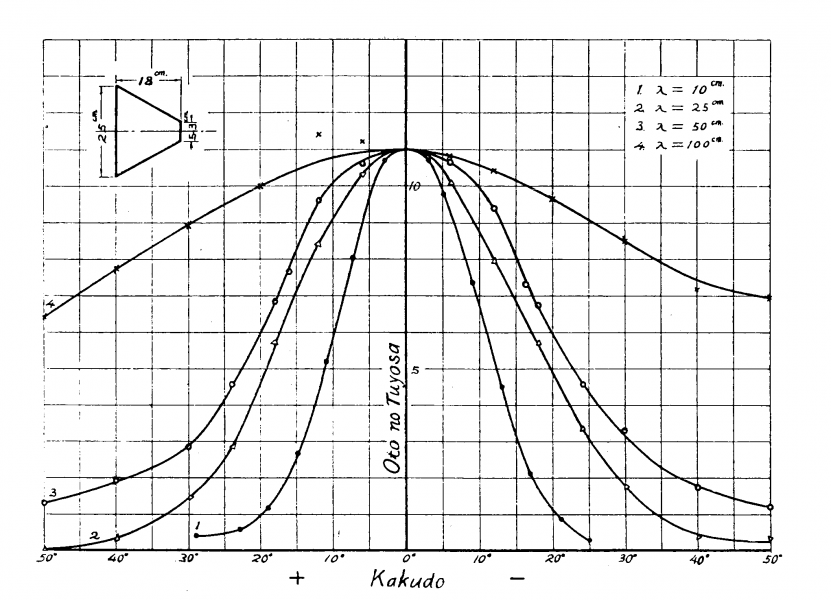I've pointed all this out before WRT to distortion spectra, exponential decay (see Jean Hiraga) and distortion vs frequency; the latter is probably the easiest tell. So I agree- looking at the measurements I don't think these amps would sound like our gear. I withhold my comments about what I think they might sound like.
Atma-Sphere Class D Mono blocks
- Thread starter Chorus
- Start date
You are using an out of date browser. It may not display this or other websites correctly.
You should upgrade or use an alternative browser.
You should upgrade or use an alternative browser.
Thanks- the one bit that isn't covered is distortion vs frequency- which can allow for distortion considerably higher than the THD figure might suggest, depending on which frequency the THD is measured. When distortion rises with frequency, unless at the edge of the audio band the result can be brightness and harshness.
Thanks for this! I still remember fondly the sound of my 2002 Ducati 998, which had Termi's and desmo! The guys on the track knew when I passed them!Anyway, who cares about politics when you can enjoy the glorious symphony of a 90° L-Twin (270°- 450º firing sequence) with desmodromic valve system, emitted through Termignoni Corsa pipes?
3 years ago (note the time frame), I had a conversation with a manufacturer who makes systems that - like Atma-Sphere and Classic Audio - are inspired by historical know-how. We then concluded that audio can serve as a metaphor for 'everything'.
As illustrated by this quote?:Thanks- the one bit that isn't covered is distortion vs frequency- which can allow for distortion considerably higher than the THD figure might suggest, depending on which frequency the THD is measured. When distortion rises with frequency, unless at the edge of the audio band the result can be brightness and harshness.
"Distortion increased considerably when the Vitus Audio RI-101 was delivering 20-watts into 8? and 4? loads with the harmonic distortion components, both odd and even, stretching right up to 20kHz. Again, the distortion spectrum is similar, so I’ll examine only the 8? result, and you can see a second harmonic at –65dB (0.0562%), a third at –68dB (0.0398%), a fourth at –92dB (0.0025%), a fifth at –77dB (0.0141%), a sixth at –98dB (0.0012%), a seventh at –76dB (0.0158%) after which the higher-order harmonics were between –80dB (0.01%) and –112dB (0.0002%). You can see that, on balance, the odd-order harmonic distortion components are higher in level than the even-order harmonics: it would have been better if this situation were reversed."
Reading just that quote, it does not specify what the fundamental frequency was. Perhaps this measurement was taken at 1kHz at 20W into 8? and 4?. Which can have significantly different characteristics than a THD measurement taken with a fundamental of 15kHz.As illustrated by this quote?:
"Distortion increased considerably when the Vitus Audio RI-101 was delivering 20-watts into 8? and 4? loads with the harmonic distortion components, both odd and even, stretching right up to 20kHz. Again, the distortion spectrum is similar, so I’ll examine only the 8? result, and you can see a second harmonic at –65dB (0.0562%), a third at –68dB (0.0398%), a fourth at –92dB (0.0025%), a fifth at –77dB (0.0141%), a sixth at –98dB (0.0012%), a seventh at –76dB (0.0158%) after which the higher-order harmonics were between –80dB (0.01%) and –112dB (0.0002%). You can see that, on balance, the odd-order harmonic distortion components are higher in level than the even-order harmonics: it would have been better if this situation were reversed."
As a random example, perhaps a manufacturer's published specifications indicate 0.01% THD but omit that this was only for 1W at 1kHz because the THD is 0.1% for 1W at 15kHz. Or they indicate 0.01% THD at full power but again that was only at 1kHz and into an 8? load, whereas full power at 15kHz into a 4? load has 0.5% THD.
None of your amps measure like the Hiraga (and Cheever) ideal. You keep claiming third is same as second in masking but Hiraga makes it clear that 2nd needs to be dominant and that all harmonics need to be present in an exponentially decaying pattern. Cheever found essentially the same but that our perception was also SPL dependent. Distortion vs frequency is very important, primarily because not only is the level increasing, often the pattern is changing too and for the worse.Thanks- the one bit that isn't covered is distortion vs frequency- which can allow for distortion considerably higher than the THD figure might suggest, depending on which frequency the THD is measured. When distortion rises with frequency, unless at the edge of the audio band the result can be brightness and harshness.
PSM156 | PhoenixNET | MUON PRO | K50 | MPS-X | MPD-8 | Atma-Sphere Class D | Fleetwood Deville SQ
^my chain, the class D amps are wonderful... anyone compare them to the audion amps priced similar? very happy with my atmaspheres.
^my chain, the class D amps are wonderful... anyone compare them to the audion amps priced similar? very happy with my atmaspheres.
True, it's based on a standard set of measurements (at 1 kHz in this case). A full set of AP plots would reveal more.Reading just that quote, it does not specify what the fundamental frequency was. Perhaps this measurement was taken at 1kHz at 20W into 8? and 4?. Which can have significantly different characteristics than a THD measurement taken with a fundamental of 15kHz.
As a random example, perhaps a manufacturer's published specifications indicate 0.01% THD but omit that this was only for 1W at 1kHz because the THD is 0.1% for 1W at 15kHz. Or they indicate 0.01% THD at full power but again that was only at 1kHz and into an 8? load, whereas full power at 15kHz into a 4? load has 0.5% THD.
FWIW:
Attachments
Last edited:
PSM156 | PhoenixNET | MUON PRO | K50 | MPS-X | MPD-8 | Atma-Sphere Class D | Fleetwood Deville SQ
^my chain, the class D amps are wonderful... anyone compare them to the audion amps priced similar? very happy with my atmaspheres.
A friend of mine is considering AGD amps (to go with his Rosso Fiorentino speakers), but I'm gently nudging him towards the AS monos, because:
- The AS monos seem more mature/well thought out.
- I despise the fake tube gimmickry of the AGDs.
Unfortunately, the AS monos cost $7,602.99 over here.
By the way, I like the concept of the Fleetwoord Deville SQ (too) and I've listened to it twice, powered by the Riviera Levante.
The Fleetwoods likely appeal to people who own/appreciate Devore Urangutans and Audio Note AN-Es.
However, there are a few design flaws imho, regarding which I've put together a small list of remarks and suggestions.
Off topic perhaps, but I can post it if there's interest.
Last edited:
To my ears the Devilles sounded a bit “rough and ready “ …good rocker but somewhat unrefined.A friend of mine is considering AGD amps (to go with his Rosso Fiorentino speakers), but I'm gently nudging him towards the AS monos, because:
- The AS monos seem more mature/well thought out.
- I despise the fake tube gimmickry of the AGDs.
Unfortunately, the AS monos cost $7,602.99 over here.
By the way, I like the concept of the Fleetwoord Deville SQ (too) and I've listened to it twice, powered by the Riviera Levante.
The Fleetwoods likely appeal to people who own/appreciate Devore Urangutans and Audio Note AN-Es.
However, there are a few design flaws imho, regarding which I've put together a small list of remarks and suggestions.
Off topic perhaps, but I can post it if there's interest.
Please do post, I would like to hear what you think about them flaw wise. For my own use case so far, they have been sounding really good.A friend of mine is considering AGD amps (to go with his Rosso Fiorentino speakers), but I'm gently nudging him towards the AS monos, because:
- The AS monos seem more mature/well thought out.
- I despise the fake tube gimmickry of the AGDs.
Unfortunately, the AS monos cost $7,602.99 over here.
By the way, I like the concept of the Fleetwoord Deville SQ (too) and I've listened to it twice, powered by the Riviera Levante.
The Fleetwoods likely appeal to people who own/appreciate Devore Urangutans and Audio Note AN-Es.
However, there are a few design flaws imho, regarding which I've put together a small list of remarks and suggestions.
Off topic perhaps, but I can post it if there's interest.
Here's one clue.
Atkinson's cumulative spectral-decay plot:

Fleetwood's compression driver with the type of horn that Jonathan Weiss despises (different scaling, but still...):


The resonances in the top octave are probably caused by the phase plug and the protruding roundover at the horn mouth > a source of diffraction.
"According to the Fleetwood website. The phase plug is said to prevent early reflections and aid dispersion".
Given the size of the phase plug, the latter only applies to the top octave and primarily resonances are sprayed at a larger angle (than below 10 kHz). On the positive side, this may contribute to perceived spaciousness.
Moreover, due to the small coverage angle (estimate: 60°), "the DeVille is relatively directional in the region covered by the horn-loaded driver".
In other words, a certain horn signature can be perceived on-axis. My brother also noticed this (without me saying anything).
The directivity is quite erratic - not only due to the suckout around the crossover frequency. This likely affects imaging, especially off-axis.
Whether these things are disturbing depends, among other things, on the room (acoustics) and the listening distance.
Although the woofer in the Fleetwood is far from bad:

I'd opt for a slightly bigger one:
Together with a different compression driver (all from the same manufacturer) and a better horn, the crossover frequency can be brought down to below 2 kHz, improving the overall balance. As a bonus, sensitivity increases.
Atkinson's cumulative spectral-decay plot:

Fleetwood's compression driver with the type of horn that Jonathan Weiss despises (different scaling, but still...):


The resonances in the top octave are probably caused by the phase plug and the protruding roundover at the horn mouth > a source of diffraction.
"According to the Fleetwood website. The phase plug is said to prevent early reflections and aid dispersion".
Given the size of the phase plug, the latter only applies to the top octave and primarily resonances are sprayed at a larger angle (than below 10 kHz). On the positive side, this may contribute to perceived spaciousness.
Moreover, due to the small coverage angle (estimate: 60°), "the DeVille is relatively directional in the region covered by the horn-loaded driver".
In other words, a certain horn signature can be perceived on-axis. My brother also noticed this (without me saying anything).
The directivity is quite erratic - not only due to the suckout around the crossover frequency. This likely affects imaging, especially off-axis.
Whether these things are disturbing depends, among other things, on the room (acoustics) and the listening distance.
Although the woofer in the Fleetwood is far from bad:

I'd opt for a slightly bigger one:

Together with a different compression driver (all from the same manufacturer) and a better horn, the crossover frequency can be brought down to below 2 kHz, improving the overall balance. As a bonus, sensitivity increases.
Last edited:
I also dislike the look of the "tube" electronic circuit, but AGD also has versions of their amps without the tubes. I have their new Duet mono blocks and I think they are excellent. One benefit of the "tube" is that it makes updates in the electronics very easy - AGD ships you new tubes. To upgrade the Duets, I'll have to ship them back to AGD.A friend of mine is considering AGD amps (to go with his Rosso Fiorentino speakers), but I'm gently nudging him towards the AS monos, because:
- The AS monos seem more mature/well thought out.
- I despise the fake tube gimmickry of the AGDs.
What brand of horn and drivers are you referring to use as replacements?Here's one clue.
Atkinson's cumulative spectral-decay plot:
View attachment 121097
Fleetwood's compression driver with the type of horn that Jonathan Weiss despises (different scaling, but still...):
View attachment 121096
View attachment 121098
The resonances in the top octave are probably caused by the phase plug and the protruding roundover at the horn mouth > a source of diffraction.
"According to the Fleetwood website. The phase plug is said to prevent early reflections and aid dispersion".
Given the size of the phase plug, the latter only applies to the top octave and primarily resonances are sprayed at a larger angle (than below 10 kHz). On the positive side, this may contribute to perceived spaciousness.
Moreover, due to the small coverage angle (estimate: 60°), "the DeVille is relatively directional in the region covered by the horn-loaded driver".
In other words, a certain horn signature can be perceived on-axis. My brother also noticed this (without me saying anything).
The directivity is quite erratic - not only due to the suckout around the crossover frequency. This likely affects imaging, especially off-axis.
Whether these things are disturbing depends, among other things, on the room (acoustics) and the listening distance.
Although the woofer in the Fleetwood is far from bad:
View attachment 121109
I'd opt for a slightly bigger one:View attachment 121113
Together with a different compression driver (all from the same manufacturer) and a better horn, the crossover frequency can be brought down to below 2 kHz, improving the overall balance. As a bonus, sensitivity increases.
A short follow-up to illustrate that marketing prose should generally be taken with a large bag of salt.
"Crazy for conicals
Conicals don't behave or sound like any other horns," Weiss explained. "They work differently. They have no constriction at the throat like curved-wall horns, which produce that honky, nasal coloration. They have a continuous expansion of the flare. Curved-horn walls change the wavefront as they expand. Conicals don't, so, you get a perfect spherical or hemicylindrical wavefront and constant directivity. So ... you don't have beaming. That also means reflections from room boundaries are coherent with the direct soundwave at the listening position."
Is it?
This is what Kôzi Satô found in 1929, while studying the 'sound field of a conical horn as an expansion in spherical harmonics (modes in spherical coordinates)':


"Crazy for conicals
Conicals don't behave or sound like any other horns," Weiss explained. "They work differently. They have no constriction at the throat like curved-wall horns, which produce that honky, nasal coloration. They have a continuous expansion of the flare. Curved-horn walls change the wavefront as they expand. Conicals don't, so, you get a perfect spherical or hemicylindrical wavefront and constant directivity. So ... you don't have beaming. That also means reflections from room boundaries are coherent with the direct soundwave at the listening position."
Is it?
This is what Kôzi Satô found in 1929, while studying the 'sound field of a conical horn as an expansion in spherical harmonics (modes in spherical coordinates)':


Last edited:
So, are you an Oblate Spheroid, B&C DE250 guy? No HOMs in your horns? I have a couple of complex horn types that are FEA optimized and they sound good...but my wooden spherical horns sound better to my ears.A short follow-up to illustrate that marketing prose should generally be taken with a large bag of salt.
"Crazy for conicals
Conicals don't behave or sound like any other horns," Weiss explained. "They work differently. They have no constriction at the throat like curved-wall horns, which produce that honky, nasal coloration. They have a continuous expansion of the flare. Curved-horn walls change the wavefront as they expand. Conicals don't, so, you get a perfect spherical or hemicylindrical wavefront and constant directivity. So ... you don't have beaming. That also means reflections from room boundaries are coherent with the direct soundwave at the listening position."
Is it?
This is what Kôzi Satô found in 1929, while studying the 'sound field of a conical horn as an expansion in spherical harmonics (modes in spherical coordinates)':
View attachment 121152View attachment 121153
Hiraga is simply wrong about the 2nd and the proof of this is easy to find: A good, properly functioning tape machine will have as its dominant distortion product the 3rd harmonic. It is for this reason that many digital studios will have an analog tape machine on hand to run the recording through to add some 'warmth'.None of your amps measure like the Hiraga (and Cheever) ideal. You keep claiming third is same as second in masking but Hiraga makes it clear that 2nd needs to be dominant and that all harmonics need to be present in an exponentially decaying pattern. Cheever found essentially the same but that our perception was also SPL dependent. Distortion vs frequency is very important, primarily because not only is the level increasing, often the pattern is changing too and for the worse.
I've noticed that no-one really complains about reel to reel tape machines- in fact they have an ardent following and people are scouring the countryside looking for R2R machines to refurbish...
What is important is that the 3rd harmonic not be as high in amplitude as the 2nd usually is in an SET. Rather, you want the 3rd to be no more than the level seen in an SET (if the circuit is open loop) and preferably lower. Tape machines and fully differential balanced triode amplifiers accomplish this with ease. In the case of the latter, due to the cubic non-linearity express (rather than the quadratic of the SET) the succeeding harmonics fall off at a rate superior to the Cheever ideal, since a different exponent is in play.
When Hiraga was making his observations, the sort of circuit I'm talking about (fully differential balanced triode amplifier) didn't exist. Lacking an example, his observations are simply out of date. Technology marches on, like it does.
The class D amps we make tend to have a larger 2nd harmonic compared to the 3rd than is seen in our tube amps although the distortion is overall lower.
Not necessarily.So, are you an Oblate Spheroid, B&C DE250 guy? No HOMs in your horns? I have a couple of complex horn types that are FEA optimized and they sound good...but my wooden spherical horns sound better to my ears.
I like shortened axisymmetric (spherical) horns, according to Manfred Harsdorff's work for Zeiss Ikon (Siemens Klangfilm).
Definitely not the DE250, as there are (much) better 1" drivers available.
An example:


Last edited:
I also dislike the look of the "tube" electronic circuit, but AGD also has versions of their amps without the tubes. I have their new Duet mono blocks and I think they are excellent. One benefit of the "tube" is that it makes updates in the electronics very easy - AGD ships you new tubes. To upgrade the Duets, I'll have to ship them back to AGD.
No doubt about the performance and perceived (sound) quality. The AGD amps and the AS monos are probably the most advanced/well-thought-out GaN Fet amplifiers available today.
Last edited:
Similar threads
- Replies
- 13
- Views
- 1K
- Replies
- 94
- Views
- 10K
- Replies
- 20
- Views
- 5K
- Replies
- 58
- Views
- 7K
- Replies
- 9
- Views
- 1K
| Steve Williams Site Founder | Site Owner | Administrator | Ron Resnick Site Owner | Administrator | Julian (The Fixer) Website Build | Marketing Managersing |









